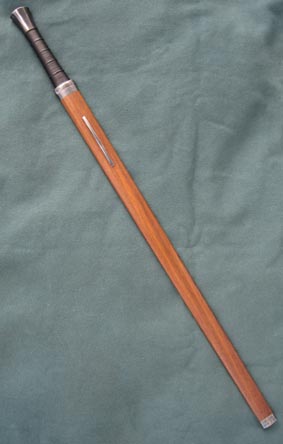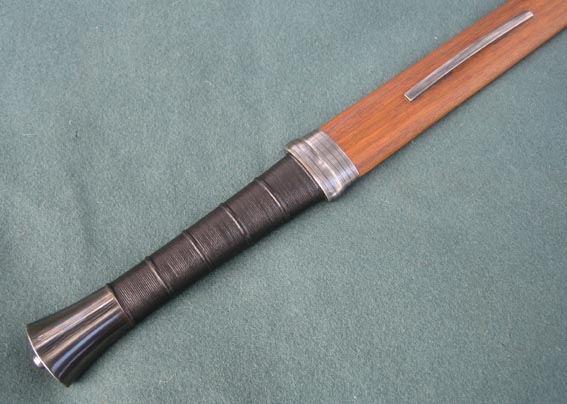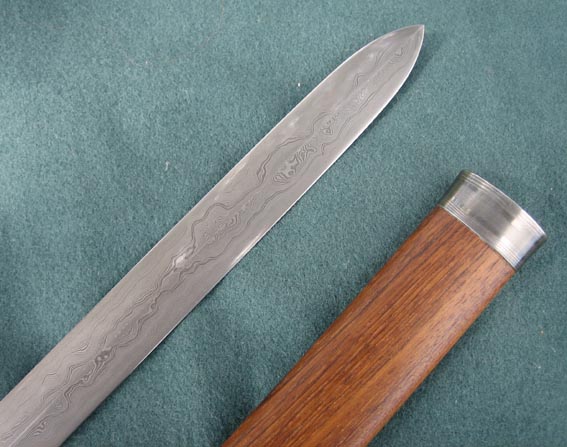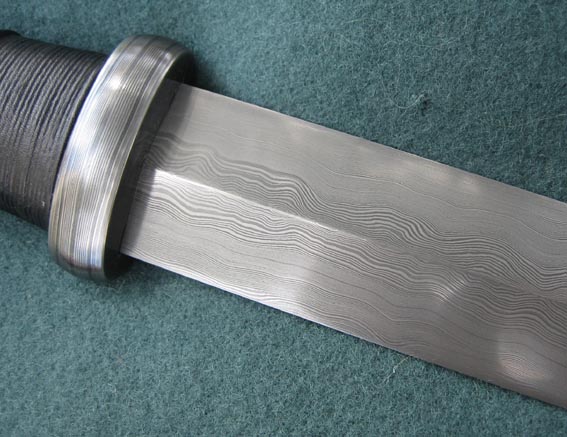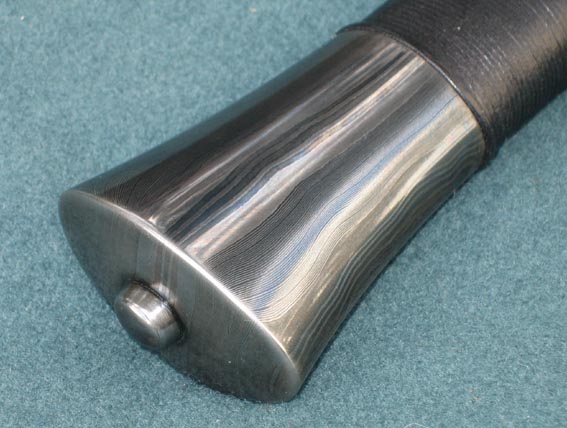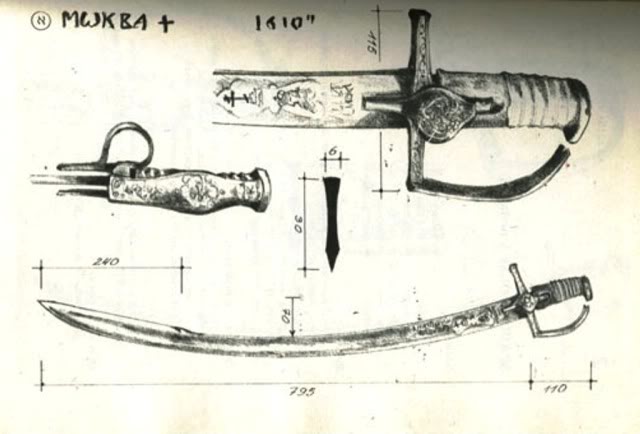This was to me an especially interesting project as I got opportunity to approach the sword as a contemporary object of craft and design.
The idea was that the sword should have some specific handling characteristics and dimensions that was important for the customer. The actual design of the sword was completely free and opend for interpretation.
As I can never be a chinese sword smith, I had to find another approach in the making.
The basis for the functional aspects of the design was a combination of the customers requests for weight and balance, but also influenced by features found in early Jians, as published by Donald B. Wagner in his "HdO, Iron & Steel in Ancient China" (a layered/laminated steel sword from Pankuang, AD 77).
There is a stark simplicity in these the very earliest steel and iron swords ffrom China that I find really attractive and inspiring.
As the project developed another theme emerged: that the materials in the sword said something about their own character and perhaps bore witness to the process of their making. Perhaps even let the materials express something of change and transformation. Because of this patternwelded steel was used in all steel components as a witness to their shaping by forging. The dragon is a common motif in chinese swords, but both the customer and I felt it would be wrong to carve a dragon in any of the parts. Instead the pattern in the pommel was made to look something like a still flame in the dark like an essence of the dragon.
I also wanted the sword to express two clearly different characters when sheathed and when drawn.
The notion of making a contemporary sword is inspiring to me. Until now I have mainly explored aspects the historical sword. This leaves things unsaid about the sword: there are other ways to do things that can be equally rewarding (or perhaps even more rewarding?).
Buy "contemporary" I mean a sword that is meant to explore the possibilities of the craft today. Not as a fantasy piece that relates to realms of make belief or legend (that can also be fun). If a sword is defined today as a historical reconstruction, a tactical weapon or something practical to have at hand when the zoobies attack, it is easy to be led to judge the result by how well it relates to the popular ideas of these themes. In the worst case this can be very limiting for the potential of the craft and our understanding and appreciation of swords.
A contemporary sword could perhaps best be defined by the aspirations of the maker and that it trancend styles, eras and themes in on or several ways. By choosing not to relate to popular definitions of what a sword is, other than itself, a contemporary swordman or swordmaker can take ownership of the craft and art in the search for something personal.
I think we can never disregard the lessons that historical swords can teach us, but it is interesting for me as a craftsman to explore the sword as a contemporary object of craft, from the perspective of function and design.
This Jian project was an opportunity to follow this line of thought and I hope to do it again in th future.
I would be interested to hear what other think about the possibilities of the contemporary sword for modern makers and sword enthusiasts.

